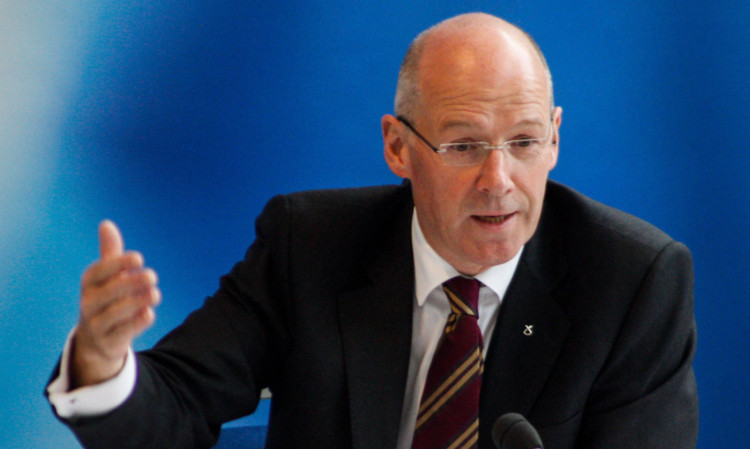
Small and medium sized enterprises the target of Nationalist strategists.
“Love bombing the prawn cocktail circuit,” as one wag called it.
But the SNP’s bid to persuade Scotland’s business community it was a credible force after years in the wilderness was one of the catalysts to the party’s success in dislodging Labour from Holyrood in 2007.
Now, with less than 10 months until the referendum, the courting of business leaders is back with a vengeance.
A Scottish Government paper launched on Tuesday will set out a series of options which SNP minsters hope will entice a generally sceptical business world that independence offers a chance to do things differently.
The paper will float a series of ideas, including a shake-up of business taxation designed to encourage companies to create more jobs by reducing the cost of employing people.
This could see a cut in “job taxes” such as how much firms pay in National Insurance for new employees.
Significantly, many of the measures are aimed at Scotland’s 340,000-strong army of small and medium sized enterprises (SMEs).
This is a recognition from SNP strategists that big business, particularly in the financial services sector, is unlikely to shift from its mainly negative view of separation.
More than one million Scots work for SMEs and other options for post-independence suggested in the paper, such as a targeted cut in corporation tax for smaller firms, would certainly make many entrepreneurs sit up and take notice if it can be demonstrated how it would work.
Finance Secretary John Swinney will use the report to argue: “The tools of independence can target policies to Scottish circumstances instead of having to deal with a misguided ‘one-size-fits-all’ approach from Westminster that doesn’t suit Scotland’s needs.
“We want to create the most supportive business environment we can to help create long-term secure growth with greater job opportunities and more prosperous businesses.”
Cheaper taxes is a simple winning formula for any category of voter but the acid test is the journey from wish list to credible plan.
Mr Swinney knows he has some credibility already in the bank with SMEs given the ever-popular Rates Discount Scheme run for small businesses but the question of how a more favourable tax regime for those creating jobs will be paid for needs to be addressed.
A spokesman for Better Together said: “It appears Alex Salmond will publish yet another paper with lots of assertions but no detail on cost. The SNP must do better than this.
“Unless the people of Scotland get credible answers with detail about how much independence will cost then it won’t be worth the paper it’s written on.”
The list of economic levers open to an independent Scotland being published this week will, less than a week later, be whittled down to a few priority areas in the Scottish Government’s long-awaited White Paper, but will it be enough to whet the appetite of the business world?
Tuesday’s launch is timed to try to deflect attention away from a major report out tomorrow from the Institute for Fiscal Studies which is expected to paint a bleak picture on the money pressures facing Scotland.
The report will map out the impact of challenges facing Scotland, regardless of who voters back next September, such as an ageing population and falling numbers of working age people paying taxes.
Business leaders will have to weigh up the potential gains for them against just how affordable and realistic the changes are in the event of a Yes vote.
Last Wednesday saw Alex Salmond addressing a Scottish Chamber of Commerce dinner in Glasgow and his deputy Nicola Sturgeon at a Federation of Small Businesses event in Edinburgh.
This “love bombing” will only intensify in the coming months.
Two weeks after the White Paper is launched, the Scottish Government will hold an event in Edinburgh for hundreds of people from business, voluntary and charity groups to quiz the First Minister on the content of the white paper.
The test for this event is just how many people who might ask awkward questions will be invited along but watch this space for more set piece bids by the Scottish Government to win over the business community.

Enjoy the convenience of having The Sunday Post delivered as a digital ePaper straight to your smartphone, tablet or computer.
Subscribe for only £5.49 a month and enjoy all the benefits of the printed paper as a digital replica.
Subscribe